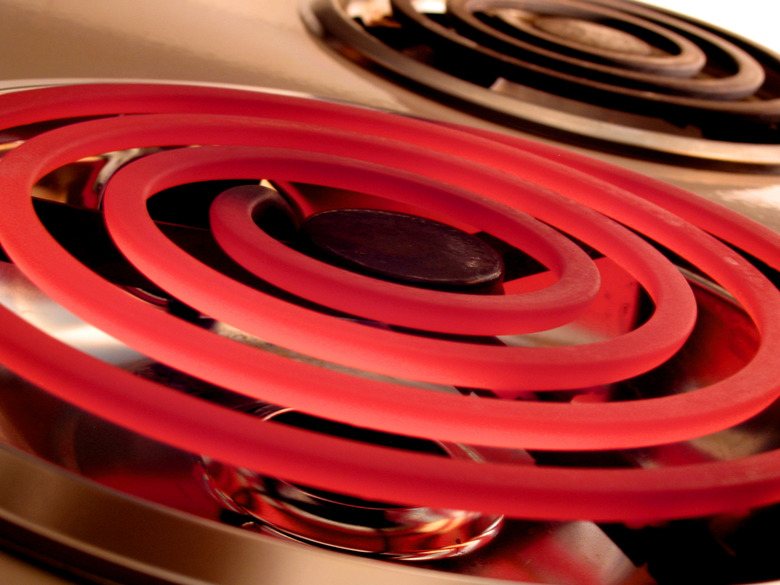How To Remove Rust From An Electric Burner
We may receive a commission on purchases made from links.
Your electric burner, whether it's a standalone hot plate or one of several on your electric stove, works best when it's free of rust. The coils and the hot plate have been designed using metals that resist oxidization and rust, but "resist" doesn't mean it will completely prevent rust. If you need to clean rust off a hot plate or stove top burner, make sure to consider the type of material that covers the heating element before you start scouring away.
Why Rust Forms on Cooktops
Why Rust Forms on Cooktops
Rust forms when steel corrodes and exposes iron to water or other acidic liquids. The heating elements, which are the gray spirals that glow orange when heated, on stove tops and hot plates are commonly made of nichrome. Nichrome is an alloy of nickel and chromium that has a high resistance to corrosion, oxidation, and rust. However, the nichrome heating element is often surrounded by steel. The steel casing keeps electricity insulated while still conducting heat, but it's also prone to rusting.
Water that boils over when cooking or stray splashes that sit on the burner can eventually cause rust to form. Rust spots can cause uneven heat spots on your burner that can ruin a dish or leave you with unsafe, undercooked meat. Fortunately, it's easy and inexpensive to clean rust off a hot plate or stove burner.
Remove Rust From Burner Coils
Remove Rust From Burner Coils
If your electric stove top coils are exposed, chances are they've suffered through some burned-on food and acidic spills. To give the coils a thorough cleaning, you can remove them entirely from the stove unit. Before beginning, make sure every burner is completely cooled to room temperature.
- Lift and pull each burner so it separates from the two-pronged metal housing in the stove.
- At the sink, use a soapy sponge to remove any loose particles and surface stains. Avoid wetting the part of the burner that connects to the stove interior.
- For rust and set stains, apply a baking soda paste made from 3 tablespoons of baking soda and 1 tablespoon of water. Let the paste sit on the coils for about an hour.
- Scrub the paste with a rough sponge or Brillo pad.
- Rinse and allow the coils to dry completely before reattaching to the stove.
Clean Rust From a Hot Plate
Clean Rust From a Hot Plate
Some stove tops and hot plates cover the heating element with a ceramic-glass protective cover. This cover can be sensitive to harsh or gritty rust removal methods, so it's important to treat this material more gently than when you're scrubbing the metal burners. The smoothness of glass and ceramic can make cleanup easier, but it's still susceptible to rust spots.
- Disconnect the hot plate from the power. Allow a hot plate or stove top to cool completely before beginning work on it.
- Use a cleaning powder, like Bar Keepers Friend or Comet cleanser, with some water and a sponge.
- Work the powder into the rust in circular motions.
- Use more cleaning powder as needed.
- To prevent rust from recurring, maintain the glass-ceramic cooktop by regularly polishing it. Check your owner's manual for the polish recommended by the manufacturer.
